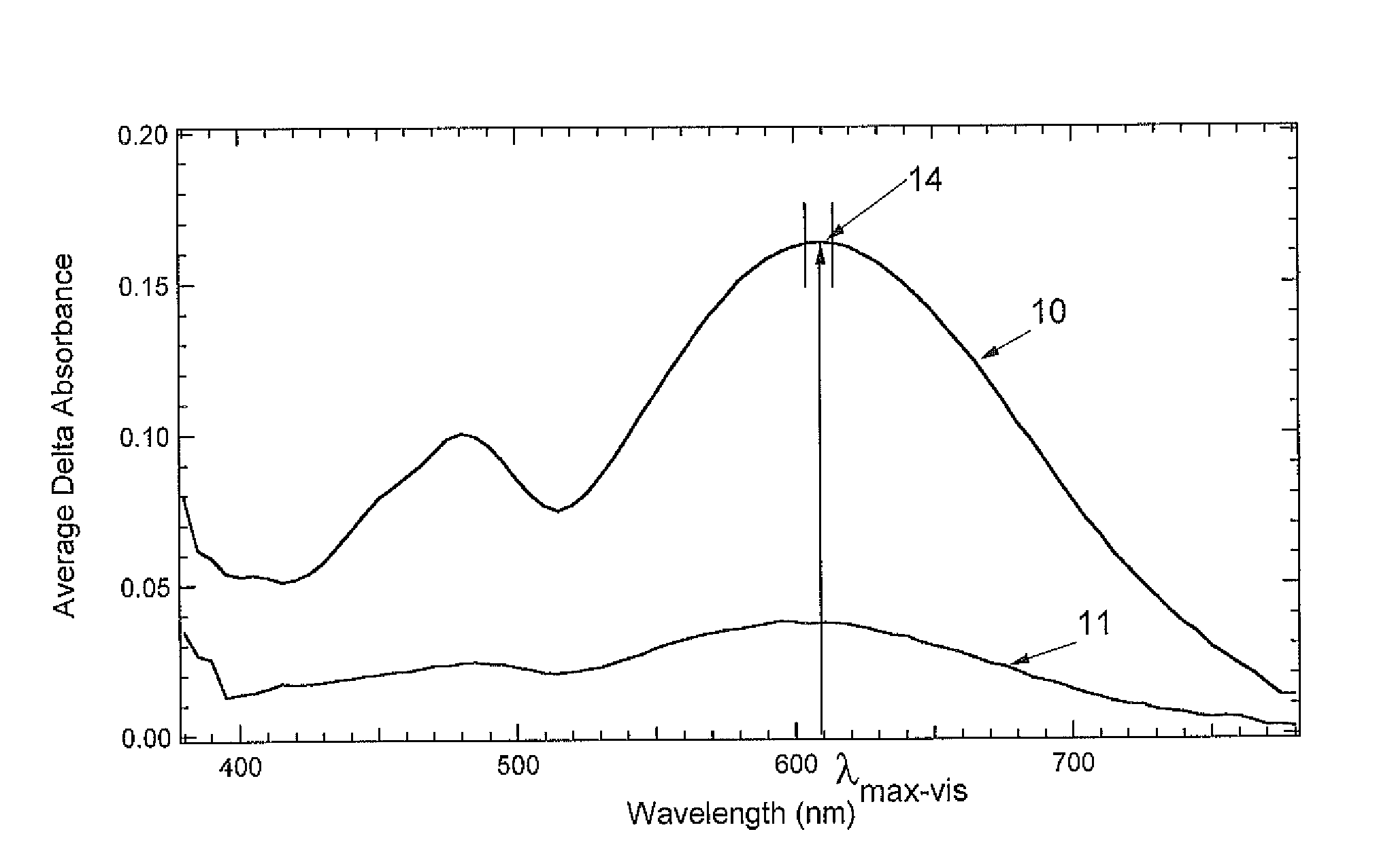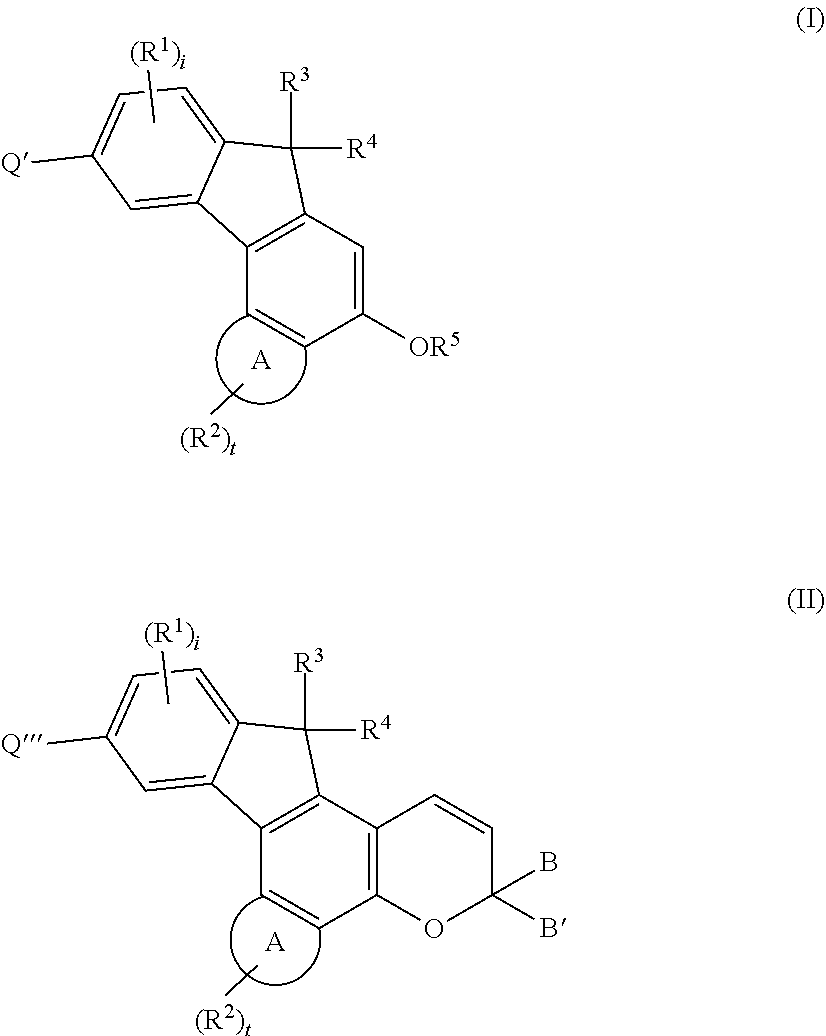Indeno-fused ring compounds
a technology of indeno-fused rings and compounds, applied in the direction of material analysis using wave/particle radiation, instruments, photosensitive materials, etc., can solve the problems of no net linear polarization of transmitted radiation, no net linear polarization effect or overall linear polarization effect achieved
- Summary
- Abstract
- Description
- Claims
- Application Information
AI Technical Summary
Benefits of technology
Problems solved by technology
Method used
Image
Examples
example 1
[0235]
Step 1
[0236]A mixture of 4-bromoacetophenone (148 g), dimethyl succinic ester (130 g) and toluene (2.5 L) was mechanically stirred in a suitable reaction flask. Potassium t-butoxide (100 g) was added in one portion and a precipitate formed. After mixing one hour, water (1 L) was added. The recovered aqueous layer was washed with toluene (200 ml) twice and acidified by 12 N HCl to pH of 2. The product was extracted with ethyl acetate and then recrystallized from a mixture of ethyl ether / hexanes (1 / 1). White crystals (170 g) were obtained. NMR indicated that the product had a structure consistent with (E)-4-(4-bromophenyl)-3-(methoxycarbonyl)pent-3-enoic acid.
Step 2
[0237]The product from Step 1 (160 g) was mixed with 50 wt % sodium hydroxide water solution (200 g) and water (4 liters) in a four liter beaker. The mixture was heated to boil and after one hour later the pH of the solution was adjusted to about 2 using 12 N HCl. The resulting precipitate was collected by filtration....
example 1a
[0242]
[0243]The product from Step 6 (3 g) of Example 1 was placed in a reaction flask. To the flask, 1-(4-fluorophenyl)-1-(4-(N-morpholino)phenyl)prop-2-yn-1-ol (2.1 g), 1,2-dichloroethane (30 mL) and p-toluenesulfonic acid (70 mg) were added. The mixture was refluxed for 4 hours. All solvent was removed. A silica gel plug column was used to purify the product. A brownish oil (2 grams) was obtained as the product. NMR indicated that the product had a structure consistent with 3-(4-fluorophenyl)-3-(4-(N-morpholino)phenyl)-10-bromo-6-trifluoromethyl-13-methyl-13-butyl-3,13-dihydro-indeno[2′,3′:3,4]naphtho[1,2-b]pyran.
example 2
[0244]
[0245]The procedures from Example 1 were followed except that: in Step 5, 1.4 M THF solution of methyl magnesium bromide was used in place of butyl magnesium bromide; and in Step 6,1-bromo-4-trifluoromethoxybenzene was used in place of 1-bromo-4-trifluoromethylbenzene. NMR indicated that the product had a structure consistent with 10-bromo-7,7-dimethyl-3-(trifluoromethoxy)-7H-benzo[c]fluoren-5-ol.
PUM
| Property | Measurement | Unit |
|---|---|---|
| temperature | aaaaa | aaaaa |
| pH | aaaaa | aaaaa |
| temperature | aaaaa | aaaaa |
Abstract
Description
Claims
Application Information
 Login to View More
Login to View More - R&D
- Intellectual Property
- Life Sciences
- Materials
- Tech Scout
- Unparalleled Data Quality
- Higher Quality Content
- 60% Fewer Hallucinations
Browse by: Latest US Patents, China's latest patents, Technical Efficacy Thesaurus, Application Domain, Technology Topic, Popular Technical Reports.
© 2025 PatSnap. All rights reserved.Legal|Privacy policy|Modern Slavery Act Transparency Statement|Sitemap|About US| Contact US: help@patsnap.com



